How Do Clocks Work?
How Do Clocks Work?
Do you know the wrist watch vibrates 32768 times per second?
The topic is about analog quartz clock.
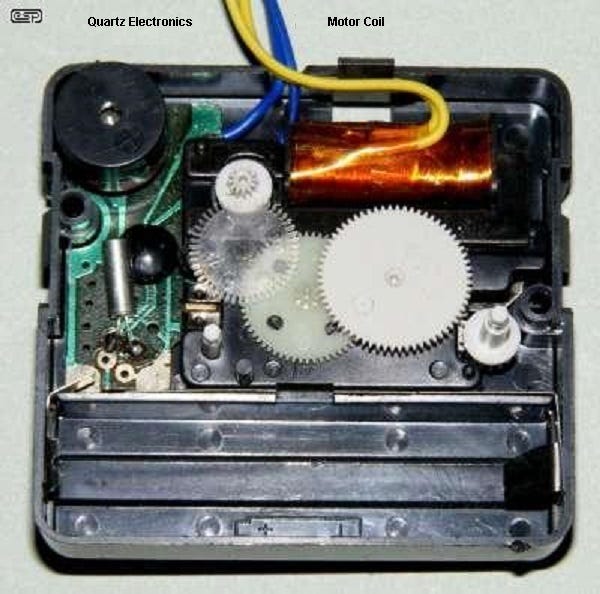


Before jumping into a quartz clock, we first have to understand how a pendulum clock tells us time.
The pendulum has a long stick with a mass at its end, which oscillates from one end to another, and this process continues. A pendulum takes one second to swing from one end to the other. Simultaneously, the second hand also moves along with it, and with the help of different gear ratios, the minutes and hours hands move and this is how the pendulum tells us time.
From the pendulum, it is known that to measure time, something needs to oscillate, and the rate of oscillation should be known.
Quartz is a crystal composed of silica. When a voltage is applied across it, it vibrates. This effect is known as the piezoelectric effect. The rate of vibration (frequency) of quartz depends on its size, shape, thickness, and applied voltage. A very small quartz crystal is used in clocks and wrist watches to produce oscillation. The shape of quartz used in time-keeping devices looks like a tiny tuning fork that vibrates when voltage is applied to it.
It is placed inside a small metal cylindrical box.
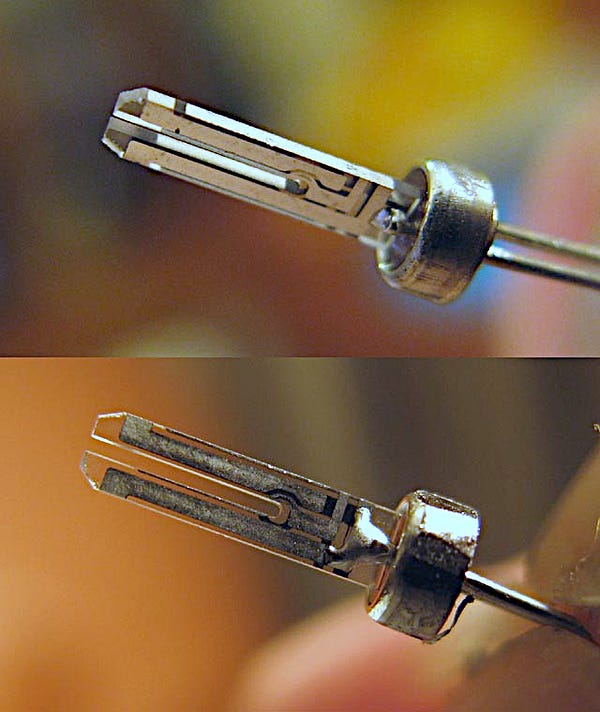
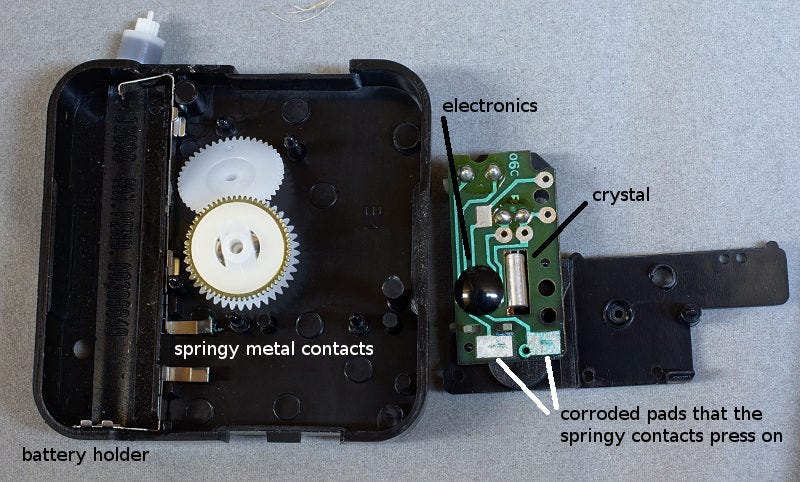
The quartz crystal inside the clock and wrist watch is cut in such a way that it oscillates 32,768 times per second. Yeah, it’s too high compared to a pendulum, which oscillates at once per second. The human ear can hear up to 20,000 hertz. 32768 hertz is higher than 20000, which is inaudible to human beings so its one of the reason behind choosing 32,768 hertz frequency.
2¹⁴=16,384 and 2¹⁵=32,768
The another reason behind choosing a frequency of exactly 2¹⁵ is that we can use 15 cascaded flip flops to drop frequency to 1 hertz,and again with another flip-flop the frequency is drop to 0.5 hertz, which drives the seconds hands ultimately.
Flip-flops are electronic circuits that store a single bit, either 1 or 0.
Flip-flop itself is a vast topic, so its notation is described here. Clicking here will take you to the flip flop’s Wikipedia page.
The crystal is connected to total 16 cascading flip flops; each flip flop divides frequency by 2, and the output of each flip flop is the input of the next flip flop, so when it reaches the 16th flip flop, the frequency is 0.5 hertz.

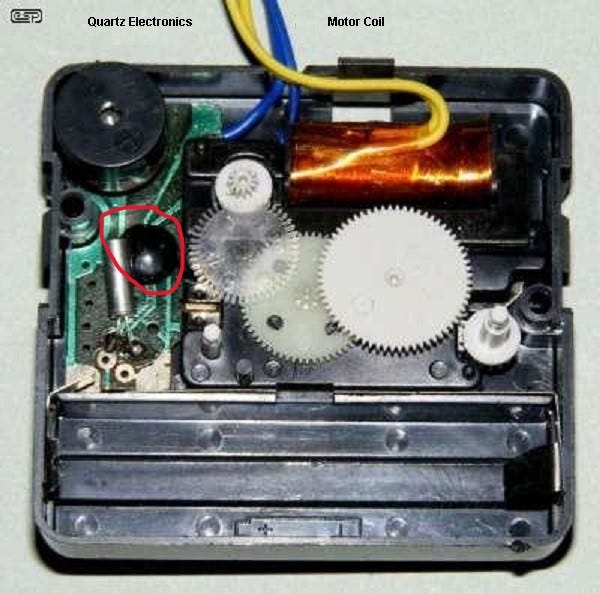
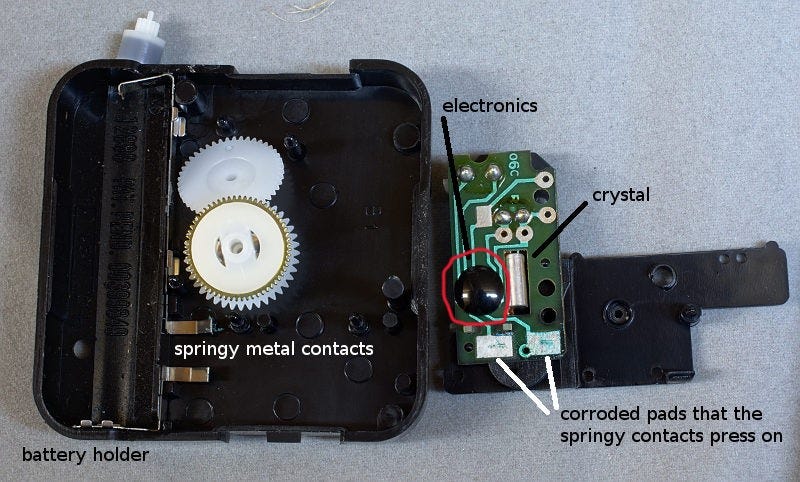
Now to rotate seconds hands, we use a motor called a lavet motor, as you can see in the below picture. The coil and magnetic gear make a lavet motor.

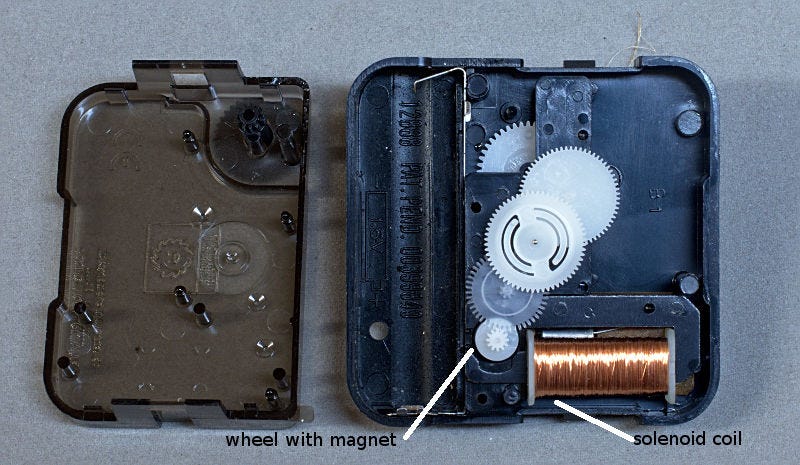
The output signal from the frequency divider is fed into the coil. The coil receives a positive pulse for a half-second and a negative pulse for another half-second, so the frequency from the frequency divider circuit is 0.5 Hz. When the coil is energized by a positive pulse, the rotor makes a half turn, and during a negative pulse, the rotor makes another turn, completing a full rotation. The shape of the metal core and the position of the rotor are also the factors in the movement of the rotor. The movement of the rotor makes that tick-tick sound. The second hand is connected to the rotor. and this is how second got its momentum.
Different gears are used with a rotor gear to get movement in minutes and hours.
This is how a quartz clock works.


0 Comments